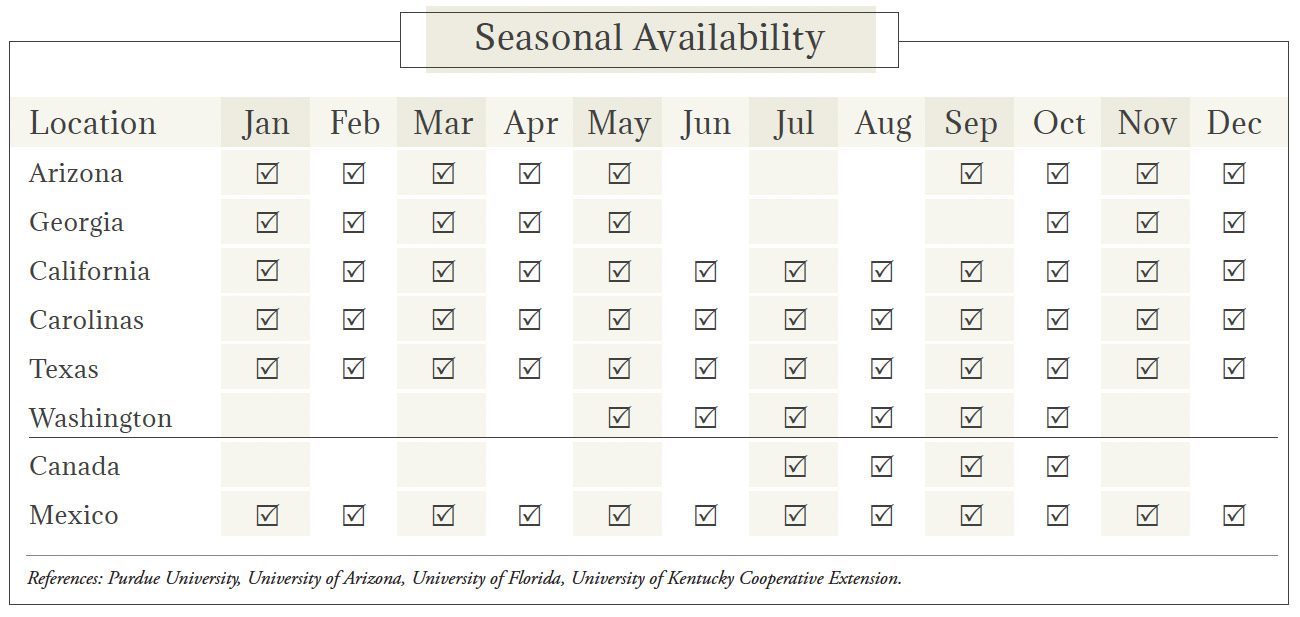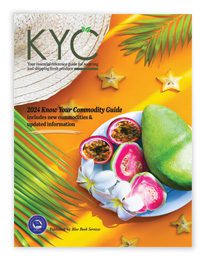Greens Market Summary


Image: Lightspring/Shutterstock.com
Greens Market Overview
There are many types of greens, most grown and gathered for centuries, and all with distinctive tastes and textures. Broccoli, collard, dandelion, mustard, and turnip greens continue to gain popularity, along with arugula and microgreens, for an ever-widening array of uses from appetizers, cocktails, and soups to garnishes, sandwiches, and salads.Types & Varieties of Greens
Arugula (also called rocket or roquette) is an aromatic leafy green with a tangy, peppery flavor in ‘common’ and Italian ‘wild’ varieties. The latter has a more pungent flavor; immature or baby arugula has a milder taste and smaller leaves. Broccoli and turnip greens are popular in slaws and salads, while collard, dandelion, and mustard greens are boiled, steamed, or sauteed, then tossed in vinaigrettes as ‘mixed greens’ side dishes. The young, coiled fronds of the ostrich fern and the northwestern lady fern, among others, are commonly known and consumed as fiddlehead ferns. While all ferns have fiddleheads, not all are edible. Fiddleheads have a smooth stem and brown papery scales covering the uncoiled fern, which should be removed before cooking. Kale (also called leaf cabbage), deemed a superfood in recent years, is distinguished by leaf type and color, as well as stem length. Like collard greens, it was traditionally cooked, but is now a popular addition to salads, soups, and smoothies. Microgreens (sometimes called ‘vegetable confetti’) are tiny, flavorful greens selected for color and texture. Generally smaller than most ‘baby’ or immature versions of greens or herbs, they are often confused with sprouts (germinated seeds). Amaranth, basil, chives, cilantro, dill, fennel, kohlrabi, lemon grass, onions, parsley, radish, and sunflower are among the many types of microgreens. Watercress is also known as eker, biller, bilure, brown cress, long tails, rib cress, teng tongue, and well grass. It has a distinctive peppery taste and is frequently included in salad mixes or as a garnish. There are many popular types including Big Leaf Cress, Curly Cress, Garden Cress, Peppercress, and Wintercress.The Cultivation of Greens
Microgreens grow quickly and are harvested (generally with scissors) as the ?rst leaves appear, from less than 1 to 3 inches in height. Fiddlehead ferns are harvested when they reach an inch or two above ground in the spring season. Some greens, such as watercress, thrive in wet environments and grow best submerged or in shallow moving water during the spring and/or fall.
Pests & Diseases Affecting Greens
Leafy greens are susceptible to aphids, ants, caterpillars, (including the diamonback moth), crickets, beetles, leafminers, leafhoppers, loopers, moths, nematodes, snails, spider mites, thrips and whiteflies. Common diseases include aster yellowing (in watercress), black rot, downy mildew, and leaf spot; affected leaves should be removed promptly to prevent spreading. As a cool season crop, hot weather is often more problematic than pests or diseases and can cause bolting.Storage & Packaging of Greens
Microgreens should be washed and cooled immediately after harvest, are highly perishable, and do not store or ship well. Greens are sensitive to ethylene, even though they produce it at low levels. Many are also susceptible to freezing injury if exposed to temperatures below 32°F for prolonged periods of time. Most varieties last from 7 to 12 days under optimal conditions. References: University of Florida/IFAS Extension, University of Georgia, University of Kentucky Cooperative Extension, University of Maine Cooperative, University of Minnesota Extension, USDA.Grades & Good Arrival of Greens
Generally speaking, the percentage of defects shown on a timely government inspection certificate should not exceed the percentage of allowable defects, provided: (1) transportation conditions were normal; (2) the USDA or CFIA inspection was timely; and (3) the entire lot was inspected.
BROCCOLI, COLLARD, DANDELION, MUSTARD & TURNIP GREENS
| U.S. Grade Standards | Days Since Shipment | % of Defects Allowed | Optimum Transit Temp. (°F) |
| 10-5-2 | 5 4 3 2 1 | 15-8-4 14-8-4 13-7-3 12-6-2 10-5-2 | 32° |
KALE
| U.S. Grade Standards | Days Since Shipment | % of Defects Allowed | Optimum Transit Temp. (°F) |
| 10-1 | 5 4 3 2 1 | 15-3 14-3 13-2 11-1 10-1 | 32° |
Collard Greens Retail Pricing: Conventional & Organic




